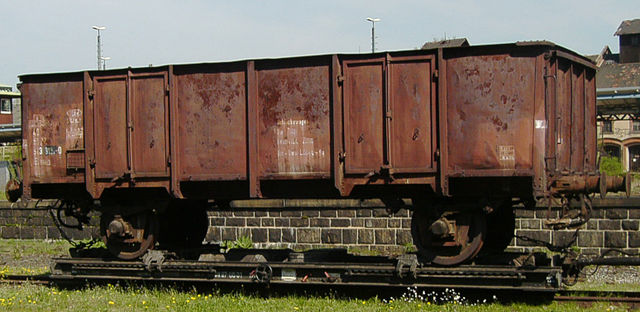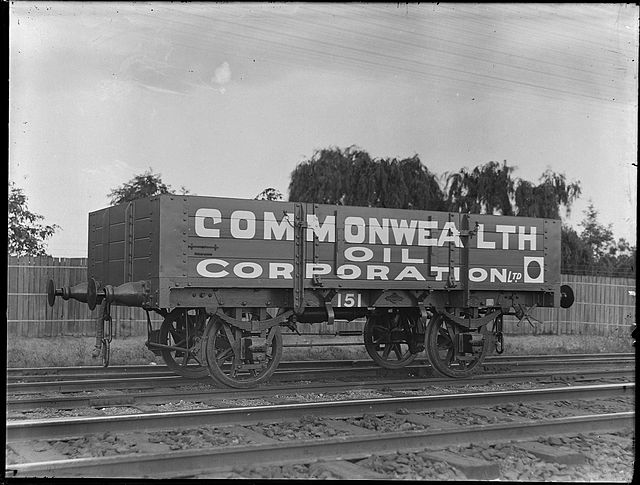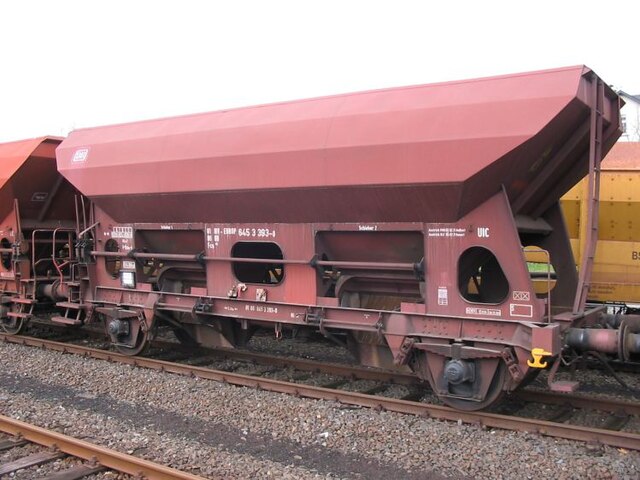Open wagons form a large group of railway goods wagons designed primarily for the transportation of bulk goods that are not moisture-retentive and can usually be tipped, dumped or shovelled. The International Union of Railways (UIC) distinguishes between ordinary wagons and special wagons (F/6). Open wagons often form a significant part of a railway company's goods wagon fleet; for example, forming just under 40% of the Deutsche Bahn's total goods wagon stock in Germany.
A Class Ow goods wagon on the Saxon narrow gauge railways with Heberlein brakes
Open wagon for peat, 750 mm (2 ft 5+1⁄2 in)
Twin-axled UIC Type 1 open wagon, used as an ash wagon, on a transporter wagon in Zittau
A Czech (ČD) twin-axled open wagon of UIC Type 2 in Raspenava
Goods wagons or freight wagons, also known as goods carriages, goods trucks, freight carriages or freight trucks, are unpowered railway vehicles that are used for the transportation of cargo. A variety of wagon types are in use to handle different types of goods, but all goods wagons in a regional network typically have standardized couplers and other fittings, such as hoses for air brakes, allowing different wagon types to be assembled into trains. For tracking and identification purposes, goods wagons are generally assigned a unique identifier, typically a UIC wagon number, or in North America, a company reporting mark plus a company specific serial number.
Hbillns wagon with sliding sides in ITL’s green livery
Commonwealth Oil Corporation goods wagon in Australia
Range of goods wagons at Kornwestheim marshalling yard
The side-discharging Class Fcs092 became the UIC standard for the transportation of coarse-grained goods








